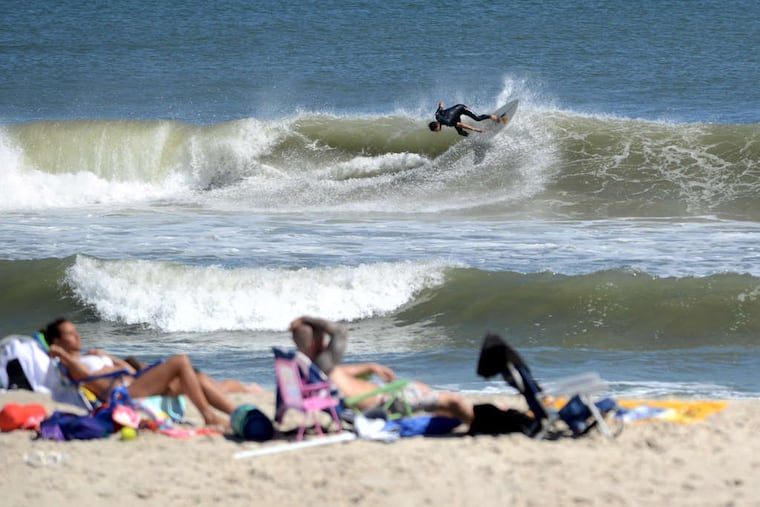Ernesto to incite ‘dangerous’ rip currents at the Jersey Shore this weekend, and all along the East Coast
Ernesto will stay offshore but will act like a giant plunger agitating the Atlantic.

Hurricane Ernesto won’t have a direct impact on the Philly region as it parallels the coast, but it is expected to make the Atlantic Ocean a dangerous place at the Shore and for hundreds of miles in either direction.
Even though the center of Ernesto will be hundreds of miles offshore, the National Weather Service is warning of “very dangerous rip currents” — powerful currents that move away from the shore and take swimmers with them — along the New Jersey and Delaware beaches as it effectively becomes a massive plunger agitating the Atlantic.
“The rip current risk will be high pretty much from Miami to Maine,” said Alex Staarmann, meteorologist with the weather service in Mount Holly as Ernesto generated “long period swells.”
The rip current risk is forecast to become “high” both Saturday and Sunday. The risks could persist into the workweek, the weather service says.
As of 5 p.m. Friday morning, Ernesto was about 125 miles south of Bermuda, where a hurricane warning was in effect, with top winds of 100 mph and was plodding north at less than 15 mph, the National Hurricane Center said.
It was forecast to lose some intensity but to retain its hurricane status as it passes the Canadians maritimes.
Staarmann said Ernesto likely would make its closest approach to the Midatlantic coast sometime Sunday, and even after it passes, “there will probably some rough surf with the lingering swells,” he said.
Surf’s up, and dangerous
A National Weather Service study published in 2017 found that, in the previous two decades, on average, rip currents were blamed for two deaths annually.
The majority of the deaths had occurred between 5 and 7 p.m., when lifeguards tend to be off-duty.
In May 2022, three juveniles, including a 12-year-old who was hospitalized, were rescued after they evidently were caught in a rip current on an unguarded beach in Ocean City.
Although beach patrols in all likelihood will be advising people to stay out of the water or err strongly on the side of caution, it may be even more likely that not everyone is going to listen.
“Surfers will be out there doing their thing,” said Michael Crowley, with the Rutgers University Center for Ocean Observing Leadership. ”Whether or not it’s dangerous.”
If you’re caught in a rip current, here’s advice from the National Weather Service
Remain calm to conserve energy and think clearly.
Never fight against the current.
Think of it like a treadmill that cannot be turned off and that you need to step to the side of.
Swim out of the current in a direction following the shoreline. When out of the current, swim at an angle — away from the current — toward shore.
If you are unable to swim out of the rip current, float or calmly tread water. When out of the current, swim toward shore.
If you are still unable to reach shore, draw attention to yourself by waving your arms and yelling for help.